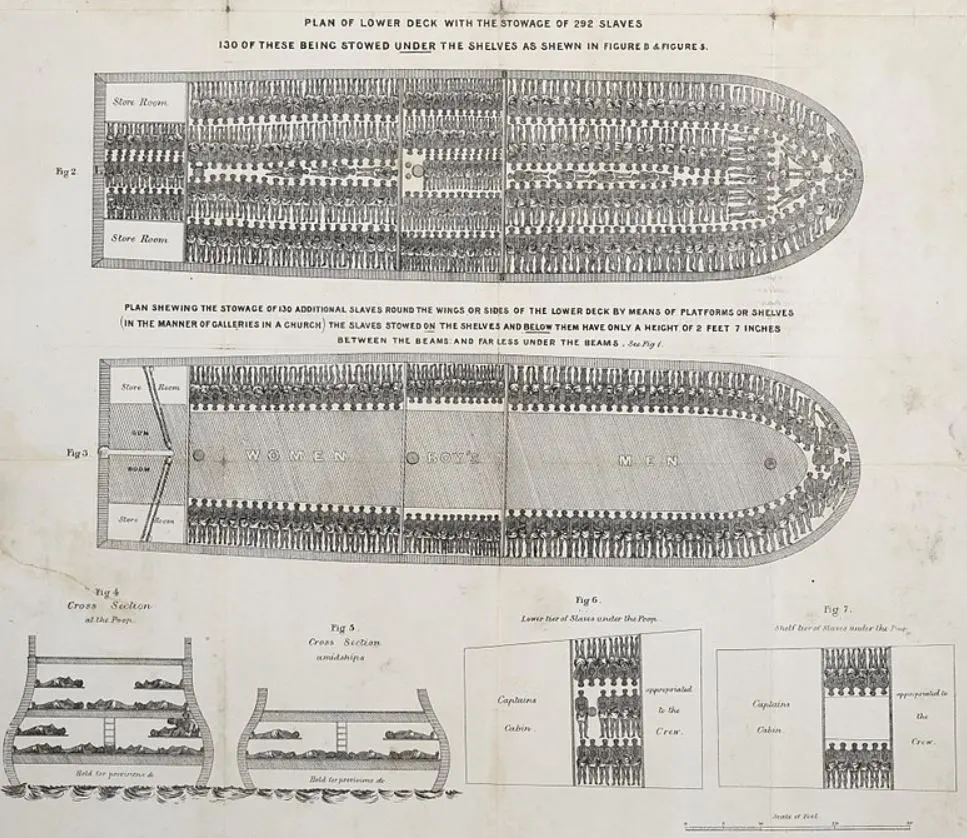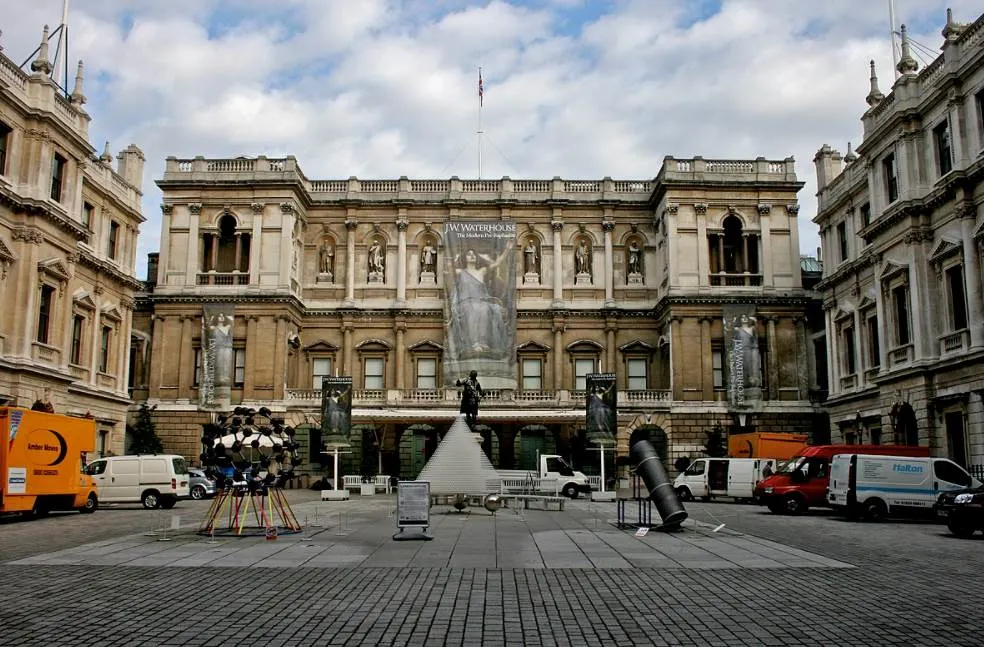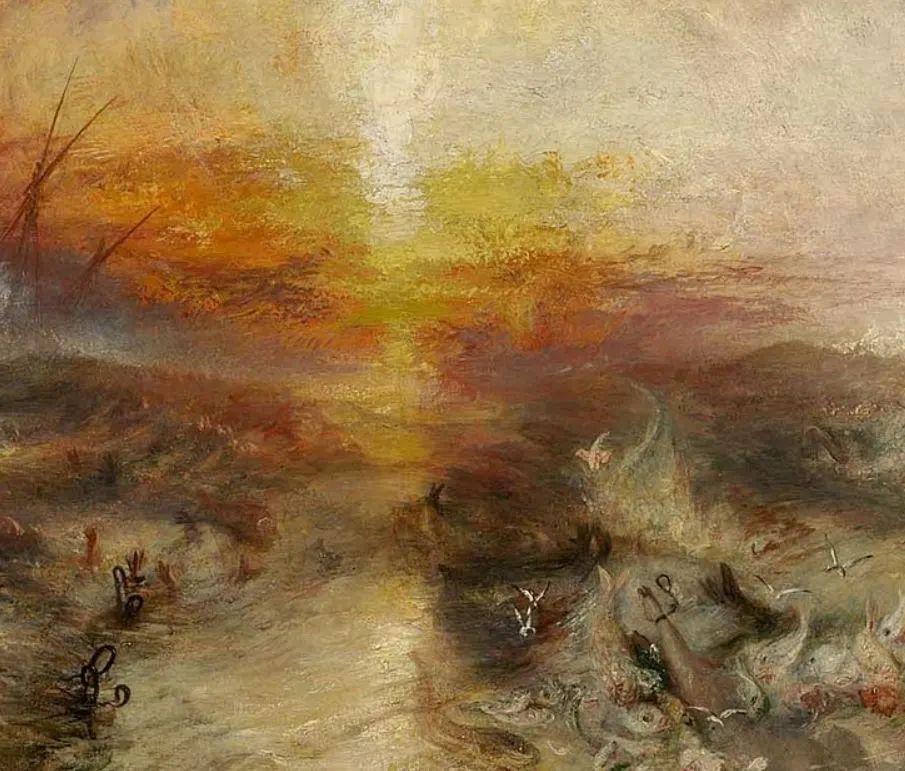Colorful maritime paintings that are both expressive and turbulent define the oeuvre of J.M.W. Turner (1775-1851).
Especially during the final period of Turner’s career, he captured the wild sea in a way that very few artists have done in art history.
The English painter completed one of his ultimate masterpieces after being inspired by a great tragedy that occurred when he was just 6 years old.
In this article, you’ll discover some of the most interesting facts about The Slave Ship by John Mallord William Turner, a Romantic painting that defines the era in which he lived.
1. It was completed long after Turner became an established artist
John Mallord William Turner was a Romantic artist and one of the leading figures of this early 19th-century art movement.

2. It depicts a typical maritime painting by the Romantic artist
Turner was known for his ability to capture the power and beauty of nature in his paintings, and The Slave Ship is no exception.
The painting’s stormy seas and turbulent skies create a sense of chaos and danger, while the bright colors of the sunset in the background add a sense of beauty and hope.
The painting’s composition is carefully balanced, with the ship and its cargo of slaves placed in the center of the frame, surrounded by swirling waves and clouds.

3. It was probably inspired by a massacre that took place in November 1781

Even though this hasn’t been confirmed, Turner likely became inspired to paint this work after reading “The History and Abolition of the Slave Trade.”
This work featured a detailed explanation of one of the greatest atrocities that happened during the slave trade (and that’s quite a statement in itself).
The so-called “Zong Massacre” happened on November 29, 1781, and during the following days, and resulted in the death of about 130 African slaves.
The Zong was the name of the slave ship owned by the Liverpool-based William Gregson slave-trading syndicate. The captain made some costly errors and drinking water was running low.
The decision was made to throw a large number of slaves overboard to save the crew. The “owners” later filed an insurance claim to recover their “losses,” but luckily lost the case.

4. It was exhibited in 1840 at the Royal Academy under a different name
Turner started exhibiting his paintings at the exhibition of the Royal Academy in the late 18th century and he continued to do so throughout his career.
The Slave Ship was exhibited at the annual exhibition of this prestigious art institute in London in 1840, the year it was completed.
The painting was met with controversy when it was first exhibited, with some critics calling it “barbarous” and “disgusting.”
However, it has since become one of Turner’s most famous works, admired for its powerful message and artistic skill.

5. The English painter used color to highlight the power of nature
Turner’s use of color and light is particularly striking in this painting. The red and orange hues of the sunset contrast with the dark blues and greens of the water, creating a sense of chaos and violence.
The use of light also draws attention to the slaves struggling in the water, highlighting their plight.
Turner became famous for his use of color, and this particular painting highlights the artist’s talent to convey emotions using his color palette.

6. It’s possible that the ship in the distance isn’t the actual slave ship
The title of the painting is “The Slave Ship” and at first glance, it seems obvious that the ship fighting the waves in the distance is the actual ship from which slaves were flung into the ocean.
Some art historians have come to another conclusion and actually believe that the viewer is on board the slave ship.
The slaves drowning in the foreground and the oncoming typhoon in the distance make this theory more likely.
Regardless of this notion, the overarching sentiment is nature conquering everything, a recurring subject in Turner’s work which was often a reaction to the Industrial Revolution.

7. How big is The Slave Ship by J.M.W. Turner?
This painting is one of the most famous works by the artist but it’s definitely not his largest work.
The Slave Ship by J.M.W. Turner is a medium-sized oil n canvas painting that has dimensions of 91 × 123 centimeters (36 × 48 inches).
8. Where is Turner’s masterpiece on display today?
The painter was owned by English art critic John Ruskin (1819-1900) in the 1840s, shortly after it was exhibited at the Royal Academy.
He wrote a piece about it in his work “Modern Painters,” something that increased the fame of Turner’s The Slave Ship tremendously.
It was displayed at the Metropolitan Museum of Art in New York City in 1872 and auctioned once again in 1876.
It was purchased by Alice Hooper that year and entered the collection of the Museum of Fine Arts in Boston where you can still admire Werner’s masterpiece today.

